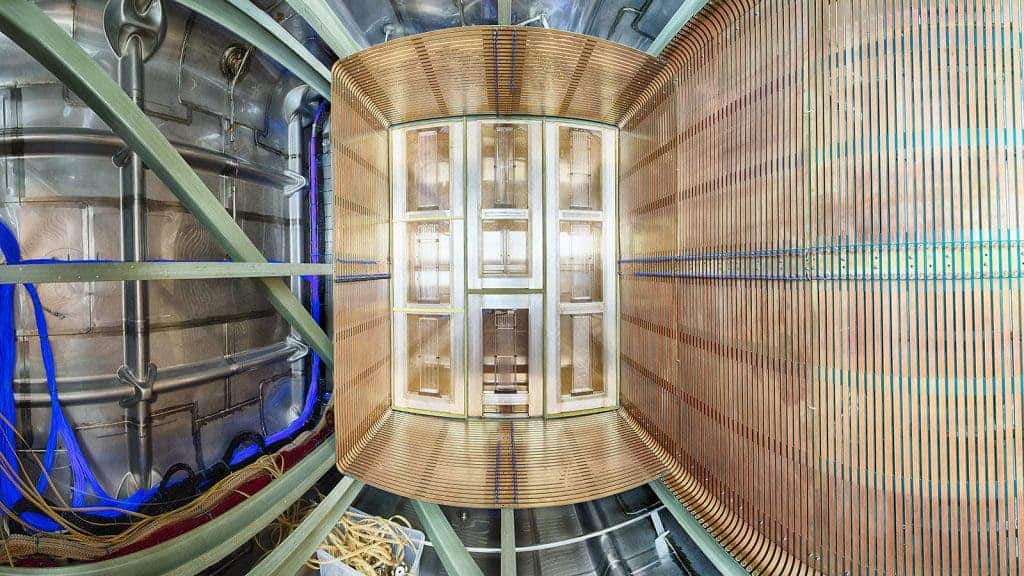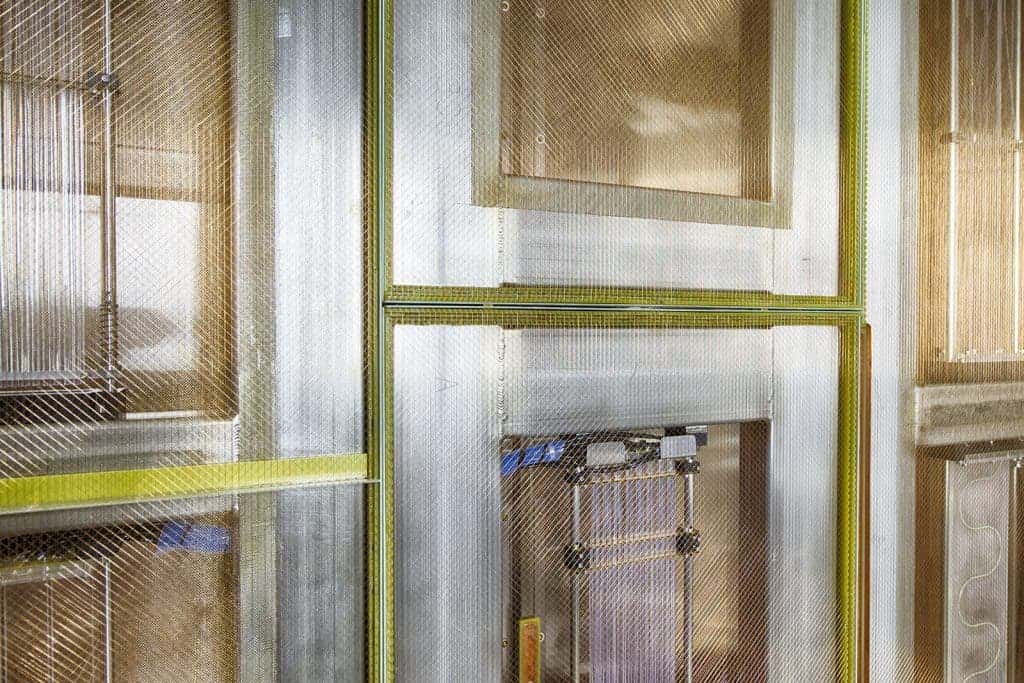The Deep Underground Neutrino Experiment Collaboration has started the first batch of tests using a small-scale 35 tons prototype of the final device, dubbed the DUNE Buggy. The team is busy gathering readings from the prototype to tweak and optimize the design of the final device.

Image credits Reidar Hahn
So….Why does the Universe (and all the matter in it) as we know it exist?
If you don’t know the answer, don’t worry, nobody does. But we want to know, so an international collaboration has brought together some of the best and brightest minds today to find these answers using the DUNE – the Deep Underground Neutrino Experiment. It will be used to find out whether neutrinos are their own antiparticles, and reason our predominantly-matter-filled universe exists; it will watch for the formation of a black hole in a nearby galaxy; and, by searching for signs of proton decay, it will bring us closer to realizing Einstein’s dream of a unified theory of matter and energy.
“Of the Standard Model particles, neutrinos are some of the least well understood,” says Célio Moura, a professor at the Federal University of ABC in Brazil who works on the prototype.
“We need huge experiments to get this difficult information about neutrinos. But we have to start little by little.”
The final stage of the DUNE will require a staggering 70,000 tons of liquid argon, making it the largest experiment of its kind–100 times larger than the liquid-argon particle detectors that came before it. The DUNE will be built a mile underground, at the Sanford Underground Research Facility, where it will be shielded from most outside radiation. But, due to the immense scope of the project the team understandably want to make sure that the detector is actually going to work as intended, so the project started with a small-scale test version of the device.
“How can we be confident that what we want to do for DUNE is going to work?” says Michelle Stancari, co-coordinator of the DUNE prototype.
“That’s where the 35-ton comes in.”
One of those little steps Professor Moura talks about is, ironically, anything but small — the construction of one of the largest liquid-argon time projection chamber ever. Built by the Department of Energy’s Fermi National Accelerator Laboratory, this prototype came to be known as the “DUNE buggy” after an artist working on the project Photoshopped monster truck wheels on an image of it.
The chamber is used to detect cosmic rays that, when passing through the liquid argon, emit electrons and light. This visible response can be measured, the location and intensity of each burst being collected and digitized. With this data, the team can recreate the particles’ direction and speed of travel, momentum, energy, and type. The prototype will allow them to check that various detector components work as they should, followed by preliminary experiments.
“The goal of this is to find out where the weak points are that need to be fixed, and also hopefully figure out the parts that work,” says Fermilab’s Alan Hahn, co-coordinator for the 35-ton.
Some of the components haven’t ever been tested before. Among these are redesigned photodetectors, long rectangular prisms with a special coating that change invisible light to a visible wavelength and bounce collected light to the detector’s electronic components. DUNE scientists are also testing the prototype’s wire planes, which hold the thin wires strung across the detector to pick up electrons. These should measure tracks in the liquid argon both in front of and behind them, unlike other detectors.
“No one else has that,” Hahn adds. “One of the main goals of the 35-ton run is to show that we can reconstruct tracks from such a wire plane.”

Photo credits Reidar Hahn
Engineers have also moved some of the detector’s electronic components inside the cryostat, which holds liquid argon at minus 300 degrees Fahrenheit (-184 degrees Celsius).
The DUNE collaboration has about 800 members from 26 countries around the world. For the prototype, Brookhaven and SLAC national laboratories provided the bulk of electronic equipment; Indiana State University, Colorado State University, Louisiana State University and Massachusetts Institute of Technology developed the light detectors; Oxford, Sussex, and Sheffield Universities made the digital cameras that can survive in liquid argon and compiled the software to make sense of the data. Fermilab was responsible for the cryostat and cryogenic support systems.
“It has to be really international—otherwise it wouldn’t work,” says Karl Warburton, PhD student at the University of Sheffield in the UK who works on the prototype.
“You need the best minds from everywhere. It’s the same as with the LHC.”
The next step is using the data mined from this prototype to build full-scale modules for a much larger 400-ton prototype at CERN.
“It’s been very important for the collaboration to have this prototype as a milestone,” says Mark Thomson, co-spokesperson for the DUNE collaboration and professor at the University of Cambridge.
“It’s an absolutely essential step.”
After that, the team will begin working on the first of four detectors for the actual experiment, scheduled to start in 2024.


